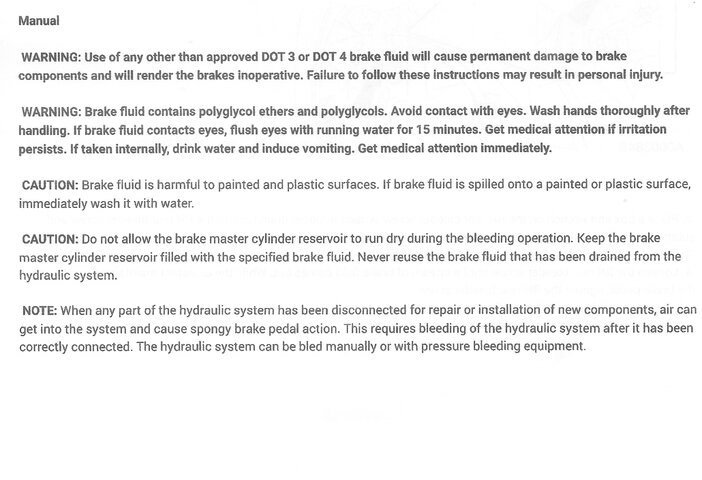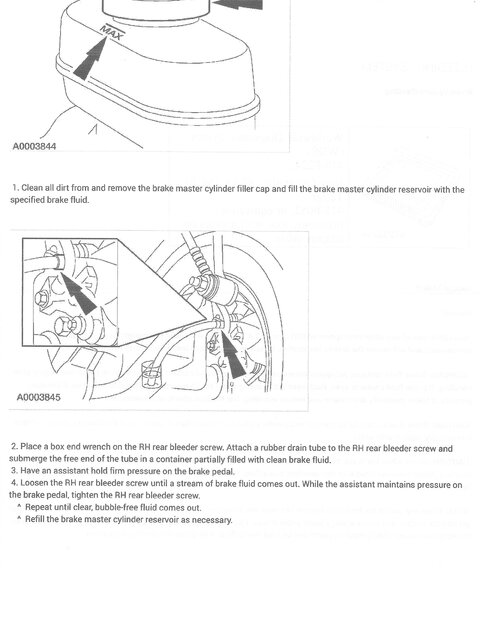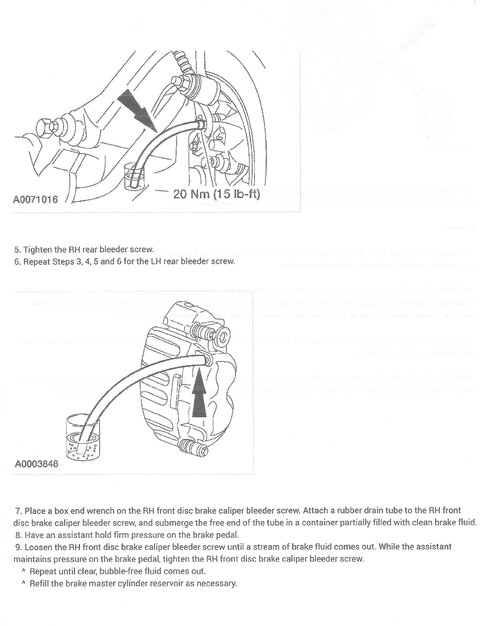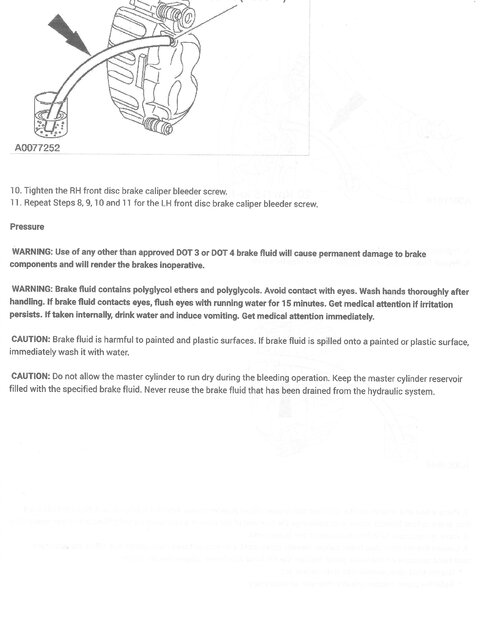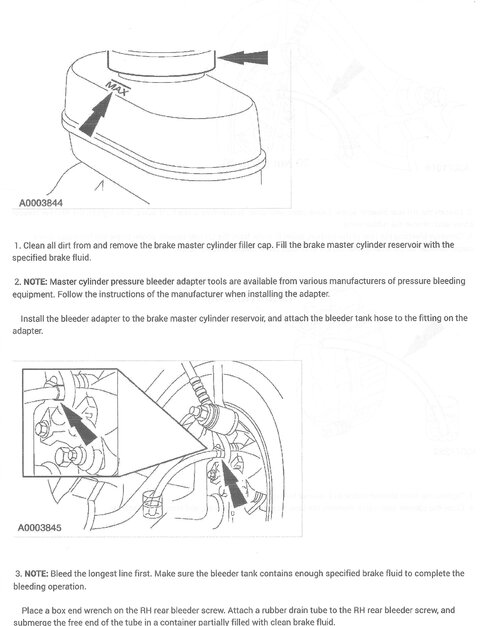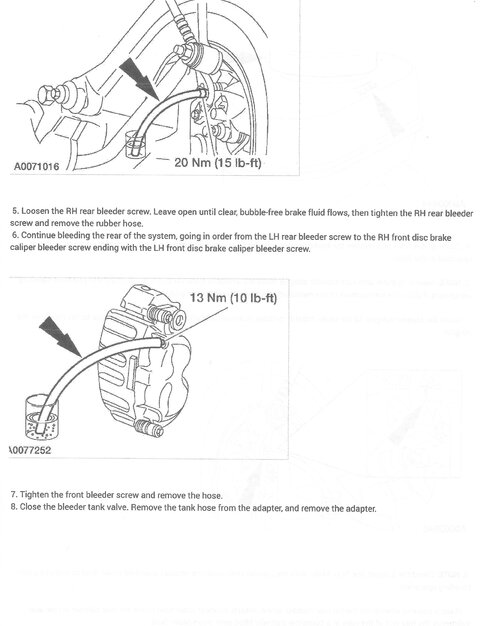There are multiple ways to replace the brake fluid on a vehicle. I prefer the manual method that requires an assistant. Here are the steps that I follow, most recently when I replaced the fluid in my 2004 Bird.
1. Use a siphon bulb pump to remove as much of the fluid from both chambers of the
master cylinder. Wipe the inside of the cylinder with a lint free rag, then re-fill with clean fluid. Be sure to check the fluid level in the master reservoir as you continue to extract the old fluid from the lines so you do not allow AIR to enter the system.
2. Start with the shortest line, left front, and pump out the old fluid from the bleeder fitting while your assistant depresses and releases the brake pedal per your command as you loosen and tighten the bleeder valve( Down --> Hold -->Up). When you see the clean fluid in the receiving cup, move to step 3.
3. Repeat the bleeding process in this sequence; right front, left rear, right rear.
By bleeding the shortest line first you reduce the possibility of having the old fluid mix with the new. When the operation is complete, the break pedal should engage with minimal effort and not feel spongy. Take the vehicle for a test drive. If not satisfied with the results, you can bleed the system again.



